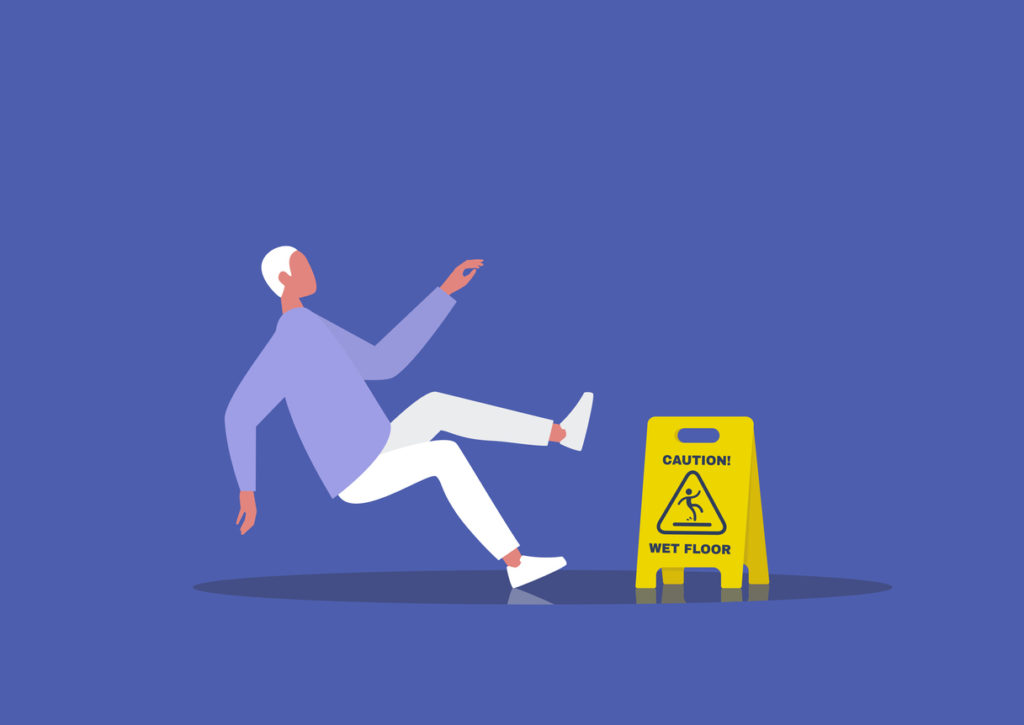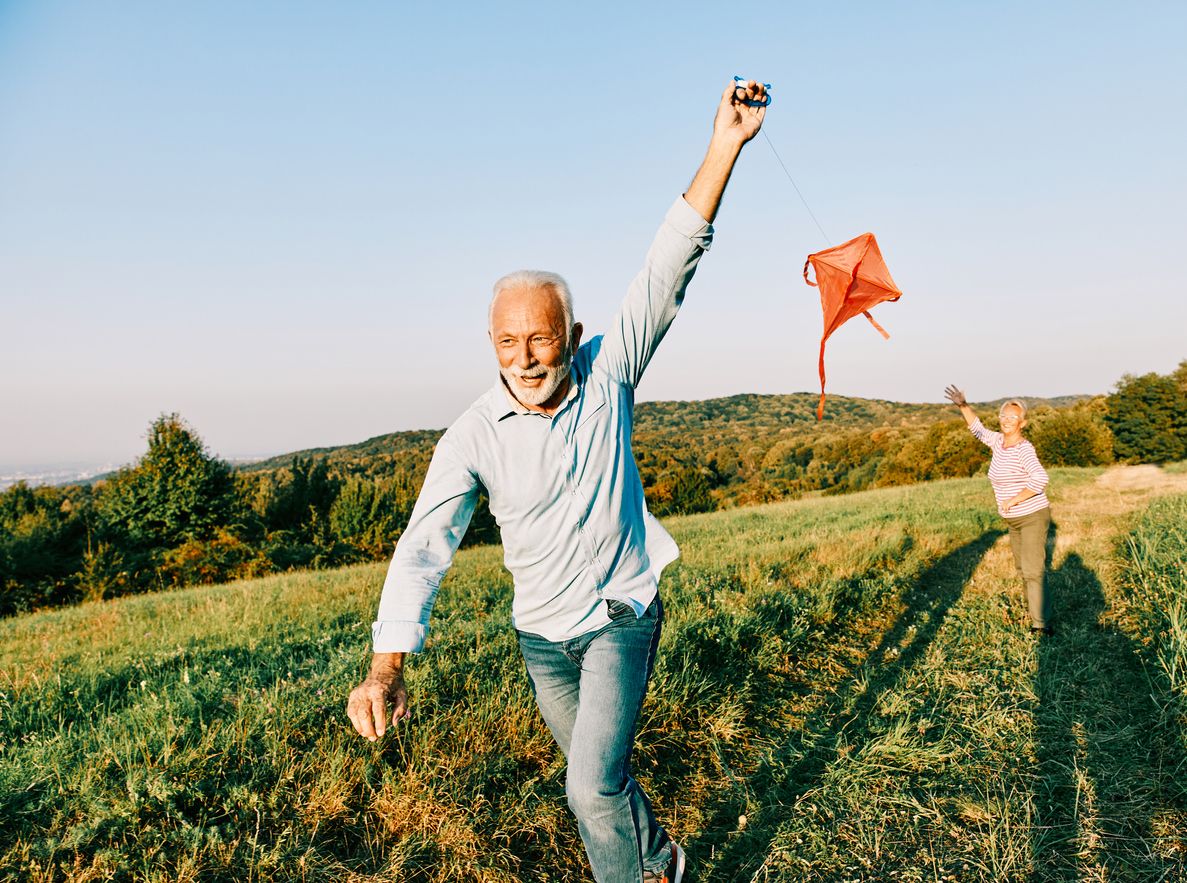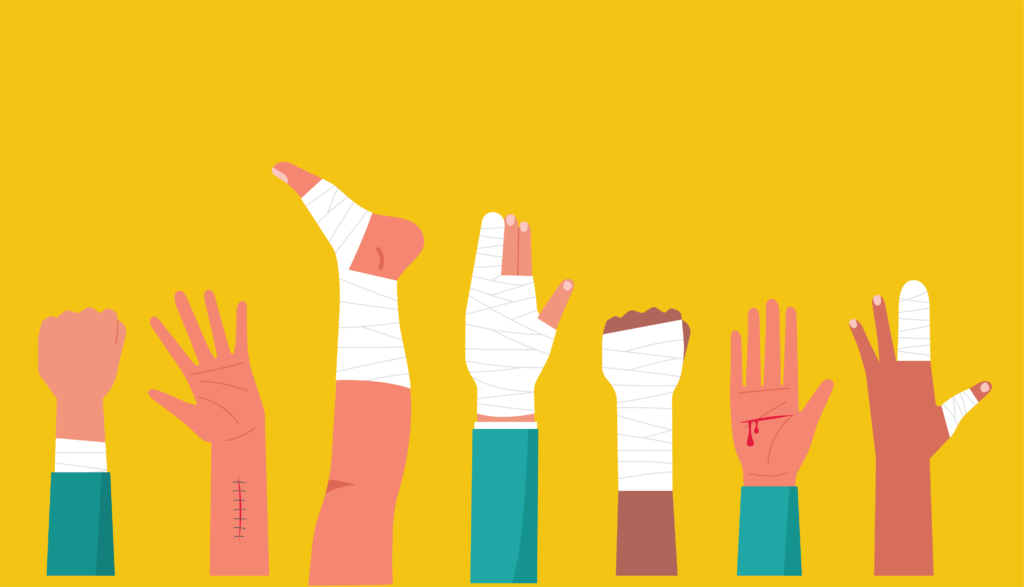
Some of the links on this page may link to our affiliates. Learn more about our ad policies.
Exercising for Life
Updated on: December 2022

When people think about their later years, they usually imagine a life freed from work or career commitments. They hope, too, that this new freedom will allow them to give their full attention to family, friends, and the activities they feel most passionate about. Making this dream a reality, however, requires health and independence, which in turn require a renewed commitment to staying healthy in general and to maintaining that health through exercise for seniors.
The good news, though, is that exercise confers all the same benefits to seniors that it does to those earlier in life, including increased longevity, improved mental clarity, a boost in energy, and greater strength to meet the physical demands of daily living. This is true even if you don’t start exercising until your later years. And while older people tend to become more sedentary as retirement and the challenges of old age restrict their activities, that doesn’t mean that you can’t make a reasonable course of exercise a part of your life or the life of a loved one.
With that in mind, here is everything you need to know about keeping an active lifestyle well into your senior years.
Find What You Need
The Benefits of Exercise for Seniors
As you think about bringing exercise into your life, you can start by understanding the benefits of exercise for seniors can provide. The Centers for Disease Control (CDC) report that both women and men receive great benefits from exercise for seniors and regular physical activity. Stamina and strength naturally decrease in most people as a function of age, but according to the CDC, most of the decrease comes from inactivity. 33% of men and 50% of women aged 75 or older, for example, engage in no physical activity at all. What’s more, the World Health Organization has identified physical inactivity as the number four cause of death in the world. And while leisure time for most seniors is increasing, there are more options to spend this leisure time in less active ways.
For this reason, achieving the benefits of exercise for seniors doesn’t require marathon-level training. A senior’s physical activity doesn’t have to be strenuous in order to bring great results – as long as it is done on a daily basis, in fact, it can be fairly moderate. What’s more, if you’re not interested in jogging, then you may be glad to hear that muscle strengthening activities are considered just as important as cardiovascular activities. Muscular strength helps to maintain balance in the body, reducing stress hormones and body fat mass, both of which help to foster cardiovascular health. Stronger muscles also reduce falling risks and keep seniors more independent on a day-to-day basis.
Here are some additional benefits of a consistent physical fitness routine:
- Increased strength – Exercise improves muscular strength and the nerves that are used to lift heavy objects. This does not necessarily mean that a person will get bigger; muscles can become stronger without increasing noticeably in size.
- Improved energy – With improved blood flow, less fat, and fewer stress hormones in the bloodstream, the body is more free to conduct its daily operations. When the body does not have to put as much work into functions such as breathing and pumping blood through the heart, you will feel the additional energy.
- Higher libido – Many older adults have reported a more robust drive for sex after a consistent exercise routine.
- Resistance to disease – The body is better able to ward off diseases of all kinds when exercise is undertaken on a daily basis.
- Resistance to physical accidents – The majority of health conditions in the senior community occur as a direct or indirect result of a fall. Physically fit older adults are less likely to fall or injure themselves during routine activities.
- Better posture – People who exercise generally have more balance and will have an easier time maintaining good posture because of the strength of their bones and muscles.
- Improvement in chronic conditions – People with conditions that might otherwise disable them or exacerbate physical or mental issues may see their strength and stamina improve through exercise, with a reduction in symptoms related to issues as varied as bone density loss, arthritis, Alzheimer’s disease, depression, and anxiety.
- Reduced blood pressure – Exercise reduces blood pressure, and can even help people with diagnosed hypertension experience fewer symptoms.
In addition to these physical benefits, exercise for seniors offers some key psychological benefits as well:
- Improved mood – Exercise is well known to be a general mood enhancer.
- Increased focus – If the body is in shape, the mind is much better able to focus on tasks. And again, exercise is also a well known deterrent to Alzheimer’s disease and general dementia.
- Less stress – Exercise allows the body to work off stress, which has the added benefit of getting rid of the stress hormones that can lead to heart problems.
Finally, improvements in physical and psychological health can lead to some significant benefits in other areas of an older person’s life, especially by prolonging their ability to live independently. In turn, this greater independence helps to maintain physical and mental health. In short, the effects of exercise for seniors are more holistic than even some doctors realize, and remembering this can keep you motivated as you begin your exercise routine.
Before You Start
Before you start exercising, however, remember: older adults should check with a trusted medical professional before taking on any new physical regimen. Even helpful exercise for seniors can cause harm if they strain the body, and seniors are usually at a greater risk of injury. That means that your exercise routine should be specifically geared toward your needs and any possible risks.
For this reason, a visit to your family doctor is the first step for safety. The family doctor will be able to assess you holistically and pinpoint any problems that could arise as you begin to exert yourself. Medical professionals can also highlight conditions that could limit the scope or intensity of the exercise you choose.
Conditions that may cause an elder adult to change or reconsider their approach to exercise include heart conditions, other cardiovascular limitations, gastrointestinal problems, and conditions such as arthritis, dementia, fibromyalgia, cancer and obesity. This should not be considered a comprehensive list: your doctor will have much more information about the health of your body and how you should work in additional exercise for seniors.
Once an older adult has been properly diagnosed in a holistic way, individual conditions may be assessed by specialists. Doctors with a specialty in certain conditions may be able to better apply a conditioning or reconstruction program for a particular area of the body. Specialty doctors will also be able to better assess how an exercise program may exacerbate conditions that show up under physical stress for older adults.
What to Look for in an Exercise Class or Routine
Once you’re clear about what you’re after and what you should avoid, it’s time choose an exercise routine. Here are some aspects to consider:
Timing — Health experts recommend that older adults exercise on a daily basis. No matter the intensity of the routine, it should be accessible and able to be performed daily.
Lifestyle — It helps to choose exercises that fit naturally into your daily life. For instance, if you already take a daily walk in the park, you might simply add weights to the routine for a heightened effect. It helps, too, if you can make exercise part of a social activity. Tennis, swimming or other group exercises can improve your lifestyle overall and help you maintain your mental health. Working with a professional trainer may also make you feel more engaged.
Budget — Depending on their cost, daily exercise programs can become a strain on a limited budget. Regimented exercise programs or gymnasiums may have a monthly fee or an expense for professional training. If that’s the case, you may want to engage in less formal activities in order to pay less.
Motivation — Do you feel particularly motivated to engage in the type of exercise you’re considering? Just because a program is formal or regimented does not mean that it has to be uncomfortable or unenjoyable, and it may help to choose exercises that are particularly appealing to you.
Schedule — You’re going to have more going on in you your day than exercise, so make sure that the program you choose fits into your schedule.
Endurance, Balance, Strength & Flexibility
As you choose your exercise routine, it’s also useful to remember that good health involves more than big muscles or cardiovascular fitness. In fact, there are four aspects of physical health that an effective exercise program should address: endurance, balance, strength, and flexibility. You need to address all of these elements to maintain a healthy balance in your workout regimen, and certain exercises are better for certain elements. Here are some of the best examples of exercises for each element, examples you can work into your exercise routine or make a habit of doing even when you’re not officially exercising.
Endurance
Endurance means the ability to engage in strenuous activity over a period of time, and it’s closely related to cardiovascular health. Brisk walks are one of the easiest and most effective ways build and maintain endurance: When you walk, choose a pace that can be continued for 30 to 45 minutes and a time of day that is not too hot, and wear comfortable clothing.
Tennis is another great way to build endurance. The running and movement involved is great exercise, and fun as well. Tennis also requires having at least one other person present, ensuring a group fitness environment that can improve the intensity of the workout.
Swimming is an excellent choice to build endurance in elder adults with joint or obesity problems. The water takes the pressure off of joints and reduces the pain of weight issues while creating a consistent intensity that can help in weight loss or cardiovascular exercise.
Balance
Maintaining balance is essential for mobility and independent living. Yoga and tai chi are popular balance regimens for elder adults. The movements are slow and calculated, taking some of the intensity out of the workout. While yoga can be quite difficult to master, and while the yoga you can do may be subject to your physical limitations, it’s known to help with older adults who tend to fall.
Eye tracking exercises improve hand-eye coordination, boost agility, and can help adults at risk of falls. Targeting the vision balances the rest of the body, most importantly the vestibular system (the balance system located in your inner ear). Another advantage of eye tracking exercises is that they are static, reducing the pressure on the body for adults with mobility issues.
One simple exercise for improving balance is known as the balancing wand exercise. Simply hold a walking cane out in front of your body, behind your body, and to each side for 10 seconds in each position. The exercise can be done with an ordinary cane or any mobility device, or with a stick.
Strength
Strength is sometimes underemphasized as a goal for seniors, but it’s indispensable to everyday living. If you want to build strength, a great way to start is with arm curls, which help to strengthen the muscles in your upper arms. You can perform this exercise with your feet shoulder-width apart, holding an adequate amount of weight in your palms with your arms down. Face your palms forward. Exhale as you bend your elbows and raise the weight to your chest without moving your elbows. Hold for one second, and breathe in as you lower your arms.
Chair dips are an especially convenient exercise for people with mobility problems. You can perform chair dips by sitting in a chair with armrests and putting your feet flat on the floor. When you’re ready, lean forward slightly, grab the chair arms and place your hands next to you. Push your body off of the chair slowly. Hold this position for one second and return to the original position.
Knee curls are a great lower body exercise. Stand behind your chair and hold it for balance. Lift one of your legs straight back with no bend in the knee. Breathe out as you bring your heel up to your gluteus muscle. Do not move your hips. Hold for one second, and breathe in as you return to the original position.
Flexibility
The more flexible you are, the less you’re likely to injure yourself through ordinary physical activity, so include stretches in your routine. The neck stretch, for example, can be done while sitting in a chair. Put your feet flat on the floor and slowly turn your head to the left and right until a slight stretch is felt. Do not tilt the head forward; hold it comfortably erect. Hold each position for up to 30 seconds.
Some back stretch exercises offer a great daily routine for elder adults with back problems. Here’s a back stretch that can be performed in a sitting position: sit straight up, lean forward comfortably, and then simply twist the body from the hips while turning your head in the same direction. Hold your position by lifting the hand to the side that you are turning and holding the arm of the chair. Hold each stretch for up to 30 seconds.
Ankle stretches are very important for holistic lower body mobility. This exercise can also be done in a seated position, reducing the risk of injury. Sit in an armless chair, stretching your legs out in front of you. Take your heels to the floor and bend the ankles while pointing the toes toward the body. Hold each position for up to 30 seconds before returning to the original position.
How Often to Exercise
Exercise routines should be done according to a doctor’s plans, keeping the physical and mental health of the patient in mind. All routines recommend at least one hour of daily physical activity for senior adults, though often specific exercise regimens will include rest days where you should remain active but refrain from that particular exercise. These rest days allow the muscles to heal themselves for improved performance over time, and while some highly intensive programs may only require one rest day, other programs may require multiple rest days.
Make sure to follow the regimen that is recommended by your doctor and by the exercise program that you are following.
Making Exercise a Habit
Since daily exercise and activity are essential, making sure you stick with your routine is as important as choosing the right one for you. Studies from many notable sources, including the Massachusetts Institute of Technology, tell us that habits generally take around 21 days to form. The secret is to force the body and fool the mind into exercising for those 21 days until your brain makes the behavior automatic. The body will then begin to enjoy and even look forward to exercise sessions.
Many people may be able to consciously force themselves into a new 21 day pattern, despite feeling unwilling to exercise during certain days of that period. Other people may need some encouragement, distractions, or rewards to build the habit. One of the best ways of guaranteeing a habit sticks is finding friends who are on the same path. Even if you can’t find a traditional friend, there are many online video channels and communities that offer digital friendship and assistance to people who are starting an exercise regimen.
Exercising at Home
Exercising in the home often makes it easier to form the exercise habit. Your home is less expensive and more convenient than a gym, and with a bit of ingenuity, you can even turn common objects into equipment that will bolster your exercise program.
- Chairs – Many exercises, including the chair dips mentioned above, use nothing more than your body weight and a chair to posture your body. Chairs are meant to take pressure off of certain parts of your body, and you can use that feature to isolate other parts, giving you the freedom to exercise and strengthen them. Chair exercises also give elder adults with limited mobility the ability to continue exercising.
- Stairs – Stairs may be used for cardiovascular exercise. Elliptical machines were invented to reproduce the experience of climbing stairs, so why not stick with the original! Stairs are a great way to keep your heart rate up, exercise your lower body, and improve blood flow.
- Walls – You can use any doorway wall in your home as a brace for joint stretches.
- Swimming pool – If you have a swimming pool in your home, you can enjoy exercise while helping your joints. Swimming is also great for people who are overweight because it takes strain off of the skeleton while allowing them to raise their heart rate and strengthen the muscles.
Older adults may also exercise at home without any equipment at all. Body weight exercises such as yoga and simple pushups, situps and leg lifts can provide just as much benefit as exercises at the gym. The secret to a healthier body through exercise is consistency and the right level of intensity, not the kind of equipment you use in your routine.
Physical Activity vs. Exercise
By the same token, ordinary physical activity can confer some of the same benefits as exercise at the gym. Physical activity is defined as any movement that requires the energy of the skeletal muscles to perform. Physical activity can include exercise, but it also includes movements that occur within the daily routine such as walking to a dog park, getting out of bed, brushing your teeth or your hair, or changing a light bulb.
Naturally, some physical activity is less strenuous than others. Exercise, on the other hand, is physical activity that is structured and repetitive, and has the aim of maintaining or improving physical fitness. Exercise is also often targeted at improving one of the five aspects of physical fitness: body composition, muscular endurance fitness, flexibility fitness, muscular strength fitness and cardio-respiratory fitness. For most seniors, 30 minutes of structured, repetitive exercise a day is essential to physical fitness. This number is derived from the perceived intensity of the average workout and from the fact that most seniors tend to live a less active lifestyle as they get older.
At the same time, physical activity and exercise can both build health in older adults. As a matter of fact, seniors who live an active enough lifestyle may be able to maintain their physical fitness through physical activity alone. However, even seniors who are very active may need to undertake special exercise for seniors to address particular issues. For instance, a senior whose active lifestyle keeps them in excellent physical shape may still need to go on a regimen to build flexibility and strength in the hip after an implant operation.
The American Institute for Cancer Research recommends both physical activity and exercise for a truly healthy lifestyle. They cite extremely lazy lifestyles as the reason that even daily exercise routines are not as effective as they should be. For instance, a senior who exercises intensely for an hour but then sits down for the majority of the day will have trouble keeping fit.
The bottom line is that it’s good to engage in general physical activity and pursue a daily exercise routine. Stand instead of sit. Take stairs instead of elevators when possible. Take on some household chores such as gardening or mowing the lawn, within reason. Make it a point to watch less TV, or at least perform some easy home exercises during commercial breaks.
Physical activity can even become exercise for seniors if approached correctly. In fact, one of the best ways to successfully implement an exercise regimen is to accentuate daily activities. Here are a few suggestions.
- Adding weights to everyday walking – You can upgrade trips to the mall or to the park from physical activity into an exercise regimen by using light weights. There are many weights made for this purpose specifically that are small, attractive and easy to carry.
- Extending a daily activity into a regimen – Enjoyable daily activities can be extended into an exercise routine. For instance, people who enjoy gardening will probably enjoy yoga. The movements are similar and many yoga classes are held outdoors.
- Physical activity during leisure periods – During TV time, many people will fit in a set of sit-ups or push-ups while watching.
How to Track Your Progress
So—you’ve chosen a program that fits your needs and abilities, and you’ve stuck with it while also boosting your ordinary physical activity. How will you know that you’re making any progress? As it happens, there are many ways to track and measure the benefits of an exercise routine. What tracking measures you use will depend on the types of results you expect from your program — a weight loss program is tracked differently from a muscular strengthening program, for example.
Here are some common ways to track exercise for seniors.
- Cardiovascular health – In most cases, lowering the resting heart rate and the body mass index (BMI) are key performance indicators of a heart health program. A lower heart rate signifies the body is working less to pump blood, preserving the heart and arteries for longer periods of time. Having an appropriate body mass index ensures that the body is better able to fight off disease. A good body fat ratio also ensures that the joints are not overtaxed by having to carry extra weight, among many other benefits.
- Muscular strengthening – Muscle strengthening programs measure success by the endurance and strength of the muscles and nerves that are used in heavy lifting. If you’re focused on building muscle strength, keep track of the number of repetitions you can do at a particular rate or keep track of the total weight lifted in each individual exercise.
- Ease of daily routine – A much less formal, but still quite relevant form of tracking is the ease with which an older adult can simply live his or her daily life. Physical fitness is defined as the ability to easily perform day-to-day tasks, and this is all that some people are looking to achieve. If you’re getting through your day with fewer physical challenges, you can probably thank your exercise routine!
Health is essential to enjoying your later years, and exercise, and physical activity in general, are essential for health. It’s never too late to start, and if you take the right approach and consult with your doctor before starting, you can expect to find your days happier, easier, and more full of the joys that make life worth living.

